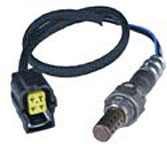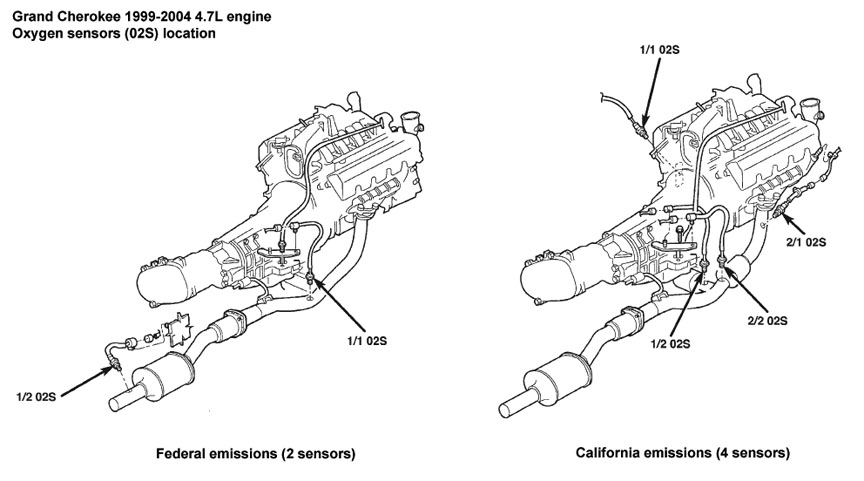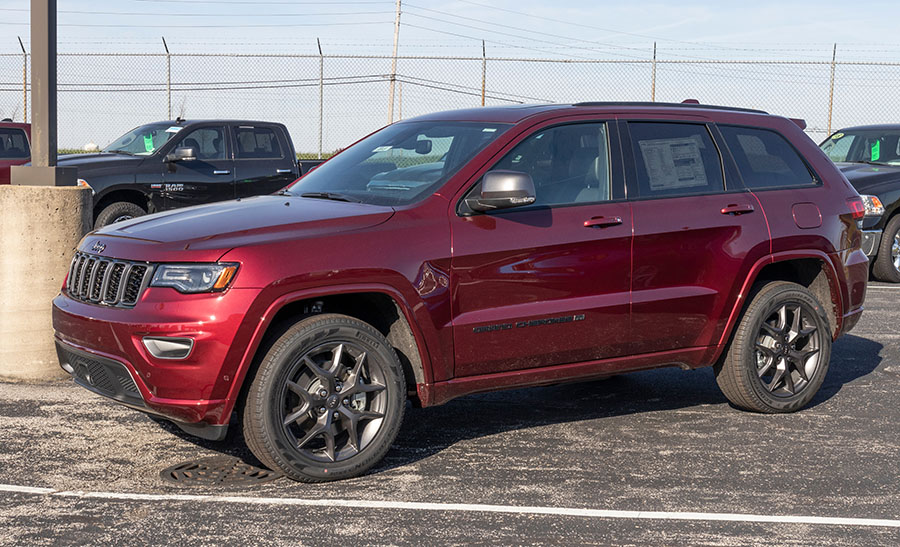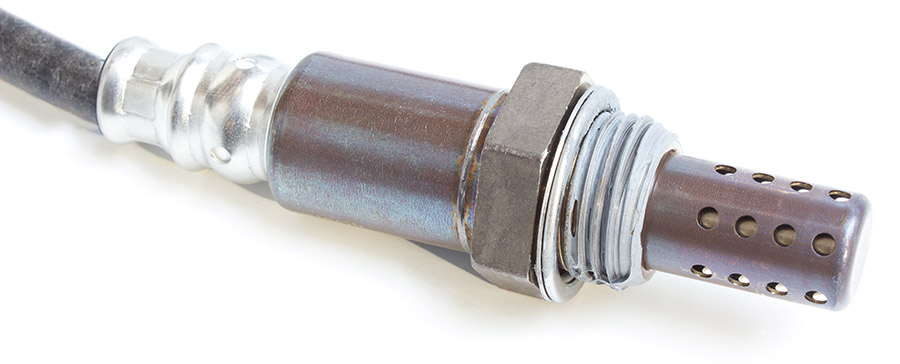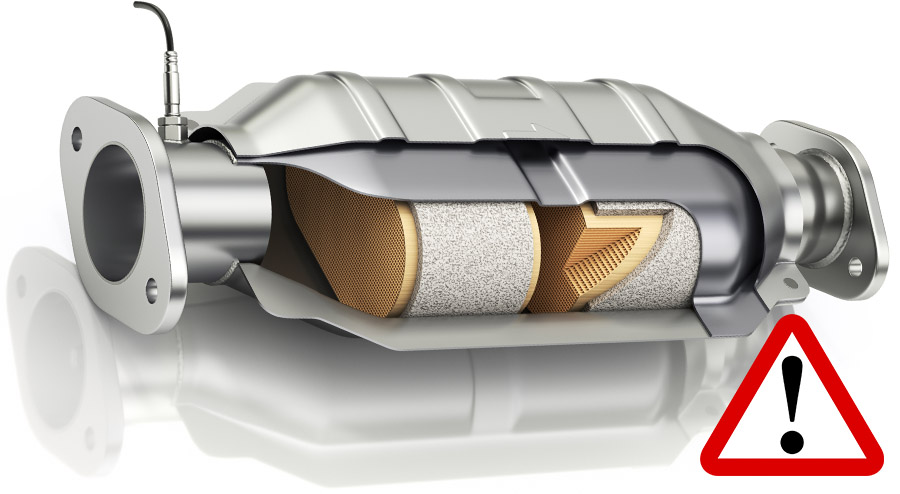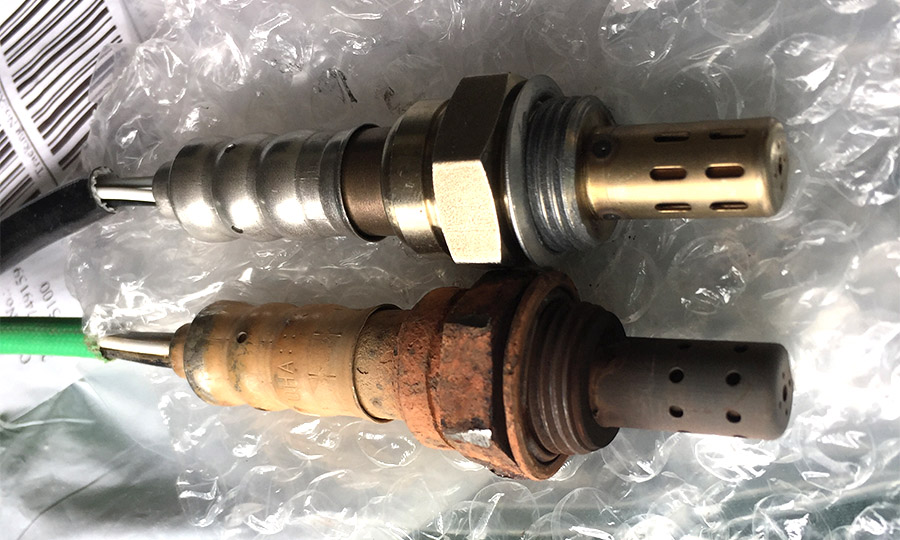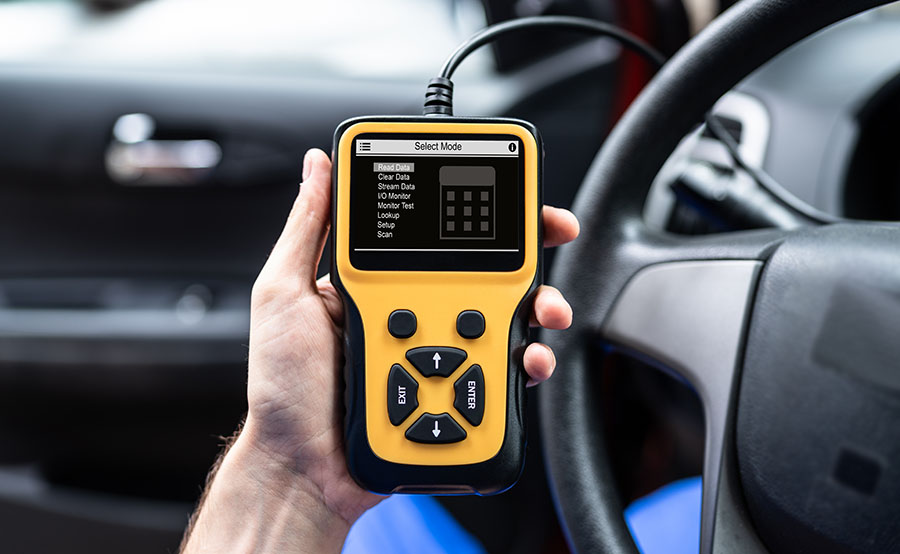- Jeep WJ Grand Cherokee 02S Oxygen Sensor Guide
- Federal Emissions Package (4.0L and 4.7L engines):
- California Emissions Package (4.0L engine):
- California Emissions Package (4.7L engine):
- 02S Sensor removal
- 02S Sensor installation
- Jeep Grand Cherokee bad O2 sensor symptoms, causes, and diagnosis
- Upstream and downstream O2 sensors
- Upstream O2 sensors are important for engine performance
- Downstream O2 sensors do not affect engine performance
- Bad O2 sensors lead to catalytic converter failure
- How to check for bad O2 sensor in Grand Cherokee?
- How to replace O2 sensor in Grand Cherokee?
- Recommended video
- Will a new O2 sensor improve gas mileage?
- Use OBD2 scanner for diagnosis
- Diagnostic error codes for O2 sensors
- Conclusion
Jeep WJ Grand Cherokee 02S Oxygen Sensor Guide
Welcome to the JeepSpecs.com in-depth page on WJ Generation Jeep Grand Cherokee oxygen sensors. We have organized as much information as we could find into a helpful article below. Is something incorrect or missing? Please get in touch with us and we’ll fix it!
Grand Cherokee WJ oxygen sensor
An O2 sensor is a galvanic battery that provides the PCM with a voltage signal (0-1 volt) inversely proportional to the amount of oxygen in the exhaust. In other words, if the oxygen content is low, the voltage output is high; if the oxygen content is high the output voltage is low. The PCM uses this information to adjust injector pulse-width to achieve the 14.7–to–1 air/fuel ratio necessary for proper engine operation and to control emissions.
The O2 sensor must have a source of oxygen from outside of the exhaust stream for comparison. Current O2 sensors receive their fresh oxygen (outside air) supply through the O2 sensor case housing.
Four wires (circuits) are used on each O2 sensor:
- 12–volt feed circuit for the sensor heating element
- Ground circuit for the heater element
- Low-noise sensor return circuit to the PCM
- Input circuit from the sensor back to the PCM to detect sensor operation
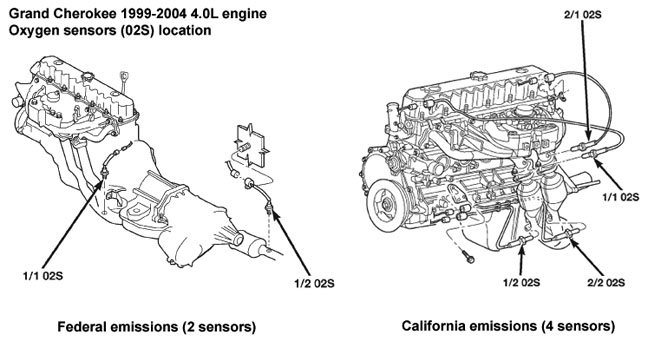
Grand Cherokee oxygen sensor locations for 4.0 and 4.7 engines
The Oxygen Sensors (O2S) are attached to, and protrude into the vehicle exhaust system. Depending on the emission package, the vehicle may use a total of either 2 or 4 sensors.
Federal Emissions Package (4.0L and 4.7L engines):
Two sensors are used: upstream (referred to as 1/1) and downstream (referred to as 1/2). With this emission package, the upstream sensor (1/1) is located just before the main catalytic convertor. The downstream sensor (1/2) is located just after the main catalytic convertor.
California Emissions Package (4.0L engine):
On this emissions package, 4 sensors are used: 2 upstream (referred to as 1/1 and 2/1) and 2 downstream (referred to as 1/2 and 2/2). With this emission package, the rear/upper upstream sensor (2/1) is located in the exhaust downpipe just before the rear mini-catalytic convertor. The front/upper upstream sensor (1/1) is located in the exhaust downpipe just before the front mini-catalytic convertor. The rear/lower downstream sensor (2/2) is located in the exhaust downpipe just after the rear mini-catalytic convertor, and before the main catalytic convertor. The front/lower downstream sensor (1/2) is located in the exhaust downpipe just after the front mini-catalytic convertor, and before the main catalytic convertor.
California Emissions Package (4.7L engine):
On this emissions package, 4 sensors are used: 2 upstream (referred to as 1/1 and 2/1) and 2 downstream (referred to as 1/2 and 2/2). With this emission package, the right upstream sensor (2/1) is located in the right exhaust downpipe just before the mini-catalytic convertor. The left upstream sensor (1/1) is located in the left exhaust downpipe just before the mini-catalytic convertor. The right downstream sensor (2/2) is located in the right exhaust downpipe just after the mini-catalytic convertor, and before the main catalytic convertor. The left downstream sensor (1/2) is located in the left exhaust downpipe just after the mini-catalytic convertor, and before the main catalytic convertor
02S Sensor removal
Never apply any type of grease to the oxygen sensor electrical connector, or attempt any soldering of the sensor wiring harness.
WARNING: THE EXHAUST MANIFOLD, EXHAUST PIPES AND CATALYTIC CONVERTER(S) BECOME VERY HOT DURING ENGINE OPERATION. ALLOW ENGINE TO COOL BEFORE REMOVING OXYGEN SENSOR.
1. Raise and support vehicle.
2. Disconnect O2S pigtail harness from main wiring harness.
3. If equipped, disconnect sensor wire harness mounting clips from engine or body.
CAUTION: When disconnecting sensor electrical connector, do not pull directly on wire going into sensor.
4. Remove O2S sensor with an oxygen sensor removal and installation tool.
02S Sensor installation
Threads of new oxygen sensors are factory coated with anti-seize compound to aid in removal. DO NOT add any additional anti-seize compound to threads of a new oxygen sensor.
1. Install O2S sensor. Tighten to 22 ft. lbs. (30 N·m) torque.
2. Connect O2S sensor wire connector to main wiring harness.
3. If equipped, connect sensor wire harness mounting clips to engine or body. When Equipped: The O2S pigtail harness must be clipped and/or bolted back to their original positions on engine or body to prevent mechanical damage to wiring.
Jeep Grand Cherokee bad O2 sensor symptoms, causes, and diagnosis
The O2 sensor in Jeep Grand Cherokee monitors the level of oxygen in the engine’s exhaust gases and reports the data to the control unit that continuously adjusts the air to fuel ratio in the engine to achieve maximum efficiency. Driving your Grand Cherokee with a bad oxygen sensor can damage the engine or the catalytic converter, so you must act urgently to avoid more expensive repairs.
The most common signs of bad O2 sensor in Jeep Grand Cherokee are slow acceleration, loss of power, irregular idling, engine hesitation or jerking when accelerating, high fuel consumption, higher tailpipe emissions, foul odor from exhaust, check engine light illuminates, and sometimes stalling.
Upstream and downstream O2 sensors
Upstream O2 sensors are important for engine performance
There are multiple O2 sensors in Jeep Grand Cherokee, how many depends on vehicle configuration and model year. But the most important one is the upstream O2 sensor, the one that is closest to the engine, usually in the exhaust manifold. The upstream O2 sensor helps in maintaining proper air to fuel ratio in the combustion chambers for maximum fuel efficiency and engine performance. Any fault in this sensor can cause all sorts of performance issues in your Grand Cherokee.
Downstream O2 sensors do not affect engine performance
The downstream O2 sensor in Grand Cherokee is located further down the exhaust system, after the catalytic converter, and is responsible for measuring the level of pollutants passing through the catalytic converter. The main purpose of downstream O2 sensor is to ensure that the catalytic converter is functioning properly. If this sensor goes bad, it does not have any affect on the engine performance, but the check engine light may illuminate and you may see error codes related to catalyst efficiency.
Bad O2 sensors lead to catalytic converter failure
Faulty oxygen sensors are the leading cause of premature catalytic converter failures. If you suspect a problem with O2 sensor in your Grand Cherokee, you should act immediately and get it checked by a professional mechanic. Because O2 sensors are relatively cheap compared to the price of catalytic converters, which can easily cost you over a thousand dollars to replace.
How to check for bad O2 sensor in Grand Cherokee?
If there is any fault in the oxygen sensor, it usually illuminates the engine check light in the instrument cluster of Jeep Grand Cherokee. You can diagnose the problem by connecting an OBD2 scanner to your vehicle. If you see any error code from P0130 to P0135 or from P0150 to P0155, it indicates a problem with the upstream oxygen sensor. You can also perform a continuity test on the connector of the sensor with a multimeter to check if the heater circuit is broken.
How to replace O2 sensor in Grand Cherokee?
You don’t necessarily have to visit a workshop to replace oxygen sensor in your Jeep Grand Cherokee. All you need is a wrench for this replacement job. Make sure the engine is cold before replacing the sensor to prevent burn injury.
- Locate the O2 sensor to be changed.
- Unplug the connector of the sensor.
- Unscrew the O2 sensor with a wrench.
- Apply anti-seize lubricant to the threads of the new sensor.
- Screw in the new O2 sensor by hand and tighten it up with a wrench.
- Connect the electrical plug of the new sensor.
Recommended video
Will a new O2 sensor improve gas mileage?
According to EPA, replacing a bad oxygen sensor can improve fuel economy by as much as 40 percent. So if your Grand Cherokee develops a greater thirst for gas, you should definitely consider checking or replacing O2 sensor, especially if the vehicle has racked up more than 100,000 miles.
Use OBD2 scanner for diagnosis
Since Jeep Grand Cherokee is equipped with on-board diagnostics (OBD), a fault diagnosis can provide initial indications of where the malfunction is located.
To begin troubleshooting, you must first connect the diagnostic tool to your Grand Cherokee. The OBDII connector is usually located under the dashboard. With the tool connected, turn on the ignition. Most diagnostic devices then ask for some information about the vehicle. It is important that you enter this 100% correctly, otherwise the result of the search may be inaccurate. In addition to the vehicle make, model, and engine type, you usually also have to type in the Vehicle Identification Number (VIN). Since some OBD codes are manufacturer-specific, the scanner will be able to give you more accurate information if you enter more details about your Grand Cherokee.
Diagnostic error codes for O2 sensors
Following are all the error codes that indicate a problem with an oxygen sensor.
- P0130 = 02 Sensor Circuit Malfunction (Bank 1 Sensor 1)
- P0131 = 02 Sensor Circuit Low Voltage (Bank 1 Sensor 1)
- P0132 = 02 Sensor Circuit High Voltage (Bank 1 Sensor 1)
- P0133 = 02 Sensor Circuit Slow Response (Bank 1 Sensor 1)
- P0134 = 02 Sensor Circuit No Activity Detected (Bank 1 Sensor 1)
- P0135 = 02 Sensor Heater Circuit Malfunction (Bank 1 Sensor 1)
- P0136 = 02 Sensor Circuit Malfunction (Bank 1 Sensor 2)
- P0137 = 02 Sensor Circuit Low Voltage (Bank 1 Sensor 2)
- P0138 = 02 Sensor Circuit High Voltage (Bank 1 Sensor 2)
- P0139 = 02 Sensor Circuit Slow Response (Bank 1 Sensor 2)
- P0140 = 02 Sensor Circuit No Activity Detected (Bank 1 Sensor 2)
- P0141 = 02 Sensor Heater Circuit Malfunction (Bank 1 Sensor 2)
- P0142 = 02 Sensor Circuit Malfunction (Bank 1 Sensor 3)
- P0143 = 02 Sensor Circuit Low Voltage (Bank 1 Sensor 3)
- P0144 = 02 Sensor Circuit High Voltage (Bank 1 Sensor 3)
- P0145 = 02 Sensor Circuit Slow Response (Bank 1 Sensor 3)
- P0146 = 02 Sensor Circuit No Activity Detected (Bank 1 Sensor 3)
- P0147 = 02 Sensor Heater Circuit Malfunction (Bank 1 Sensor 3)
- P0150 = 02 Sensor Circuit Malfunction (Bank 2 Sensor 1)
- P0151 = 02 Sensor Circuit Low Voltage (Bank 2 Sensor 1)
- P0152 = 02 Sensor Circuit High Voltage (Bank 2 Sensor 1)
- P0153 = 02 Sensor Circuit Slow Response (Bank 2 Sensor 1)
- P0154 = 02 Sensor Circuit No Activity Detected (Bank 2 Sensor 1)
- P0155 = 02 Sensor Heater Circuit Malfunction (Bank 2 Sensor 1)
- P0156 = 02 Sensor Circuit Malfunction (Bank 2 Sensor 2)
- P0157 = 02 Sensor Circuit Low Voltage (Bank 2 Sensor 2)
- P0158 = 02 Sensor Circuit High Voltage (Bank 2 Sensor 2)
- P0159 = 02 Sensor Circuit Slow Response (Bank 2 Sensor 2)
- P0160 = 02 Sensor Circuit No Activity Detected (Bank 2 Sensor 2)
- P0161 = 02 Sensor Heater Circuit Malfunction (Bank 2 Sensor 2)
- P0162 = 02 Sensor Circuit Malfunction (Bank 2 Sensor 3)
- P0163 = 02 Sensor Circuit Low Voltage (Bank 2 Sensor 3)
- P0164 = 02 Sensor Circuit High Voltage (Bank 2 Sensor 3)
- P0165 = 02 Sensor Circuit Slow Response (Bank 2 Sensor 3)
- P0166 = 02 Sensor Circuit No Activity Detected (Bank 2 Sensor 3)
- P0167 = 02 Sensor Heater Circuit Malfunction (Bank 2 Sensor 3)
Conclusion
If you see noticeable loss of performance or engine hesitation in your Jeep Grand Cherokee with high fuel consumption, a defective upstream oxygen sensor should definitely be considered. Even if your vehicle is not showing any signs of trouble, it is recommended to replace the upstream O2 sensor after 100,000 miles for optimal engine performance and fuel efficiency.
In any case, it is advisable for laypersons to visit a workshop. A professional mechanic can swiftly diagnose the problem for you.
